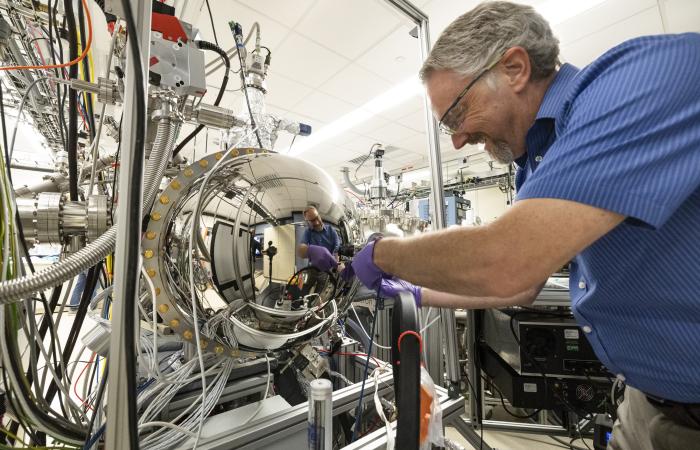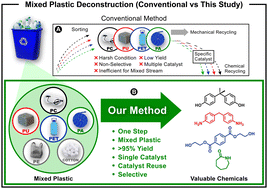2023-09-20 オークリッジ国立研究所(ORNL)

As part of the Quantum Science Center headquartered at ORNL, Robert Moore probes the interface between a topological insulator and a superconductor with spin- and angle-resolved photoemission spectroscopy. Credit: Carlos Jones/ORNL, U.S. Dept. of Energy
◆この新しいインターフェースは、エキゾチックな物理現象を生み出し、優れた量子ビットの潜在能力を持つ可能性があります。これはマヨラナ粒子を作成する可能性もあり、これは量子情報の符号化と新しい計算方法に役立つかもしれません。研究者たちは材料の電子構造を制御し、新しい物質の実現に向けて重要なステップを踏み出しました。
<関連情報>
- https://www.ornl.gov/news/researchers-advance-topological-superconductors-quantum-computing
- https://onlinelibrary.wiley.com/doi/abs/10.1002/adma.202210940
Fe(Te,Se)/Bi2Te3界面における単層超伝導と調整可能なトポロジカル電子構造 Monolayer Superconductivity and Tunable Topological Electronic Structure at the Fe(Te,Se)/Bi2Te3 Interface
Robert G. Moore, Qiangsheng Lu, Hoyeon Jeon, Xiong Yao, Tyler Smith, Yun-Yi Pai, Michael Chilcote, Hu Miao, Satoshi Okamoto, An-Ping Li, Seongshik Oh, Matthew Brahlek
Advanced Materials Published: 15 March 2023
DOI:https://doi.org/10.1002/adma.202210940
Abstract
The interface between 2D topological Dirac states and an s-wave superconductor is expected to support Majorana-bound states (MBS) that can be used for quantum computing applications. Realizing these novel states of matter and their applications requires control over superconductivity and spin-orbit coupling to achieve spin-momentum-locked topological interface states (TIS) which are simultaneously superconducting. While signatures of MBS have been observed in the magnetic vortex cores of bulk FeTe0.55Se0.45, inhomogeneity and disorder from doping make these signatures unclear and inconsistent between vortices. Here superconductivity is reported in monolayer (ML) FeTe1–ySey (Fe(Te,Se)) grown on Bi2Te3 by molecular beam epitaxy (MBE). Spin and angle-resolved photoemission spectroscopy (SARPES) directly resolve the interfacial spin and electronic structure of Fe(Te,Se)/Bi2Te3 heterostructures. For y = 0.25, the Fe(Te,Se) electronic structure is found to overlap with the Bi2Te3 TIS and the desired spin-momentum locking is not observed. In contrast, for y = 0.1, reduced inhomogeneity measured by scanning tunneling microscopy (STM) and a smaller Fe(Te,Se) Fermi surface with clear spin-momentum locking in the topological states are found. Hence, it is demonstrated that the Fe(Te,Se)/Bi2Te3 system is a highly tunable platform for realizing MBS where reduced doping can improve characteristics important for Majorana interrogation and potential applications.



